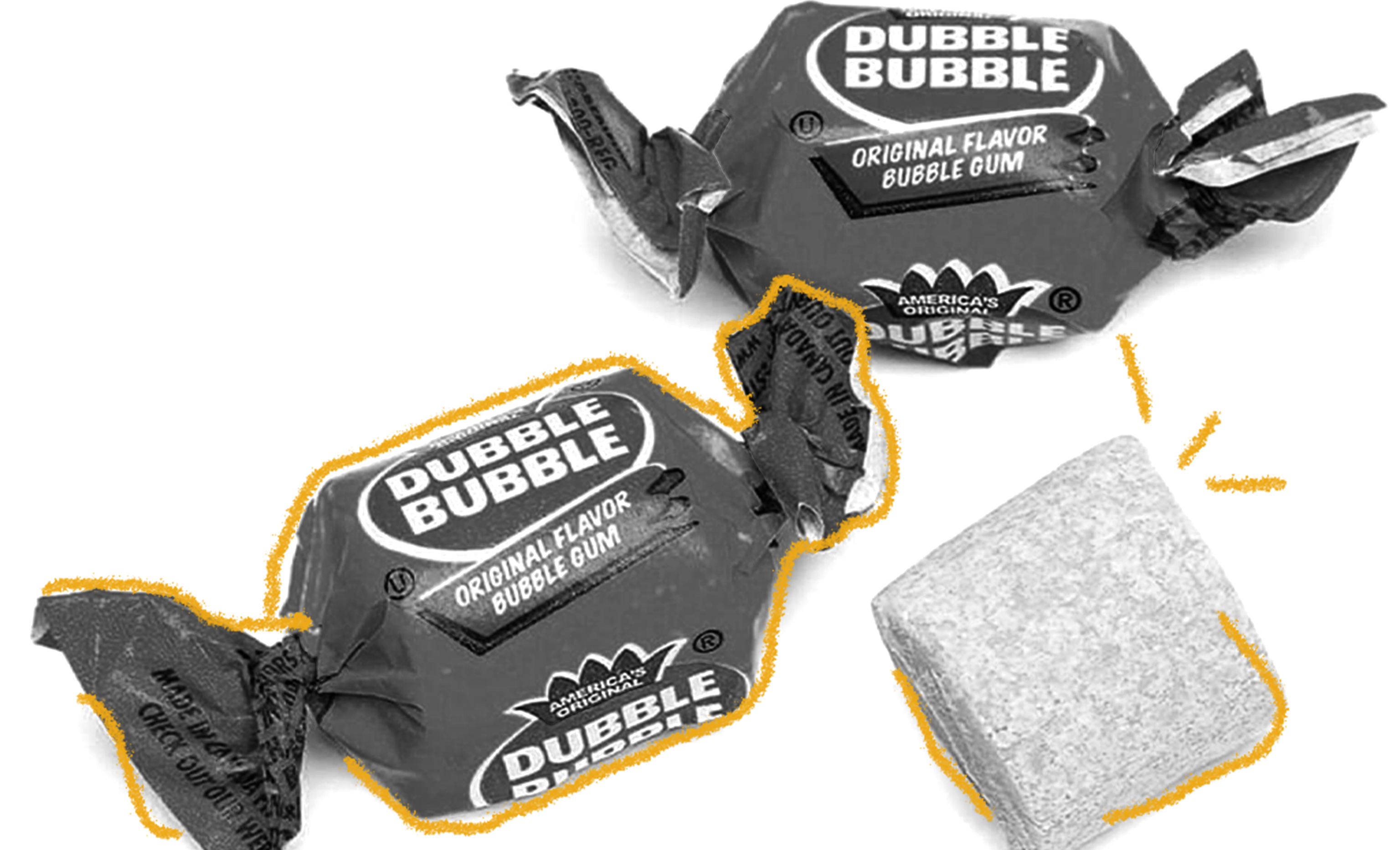By the early 1900s, chewing gum had become a competitive business, but bubble gum still hadn’t been invented yet. The Fleer Chewing Gum Company worked for years to create a viable bubble gum. Frank Fleer invented Blibber Blubber and began testing it with customers in 1906, but the substance was too sticky and had to be removed with turpentine! A junior accountant at the company named Walter Diemer began experimenting on his own and came up with a chewing gum base that the company could use (rather than having to purchase it). But when he presented the new mixture to his co-workers, they found that it made blowing small bubbles possible. It even tasted good! However, the next day, the gum had hardened. Diemer spent another fourth months working on a solution and eventually came up with a formula that remained elastic for much longer. He was allowed to teach the factory workers how to make the new gum and the decision was made to tint it pink because it was all that the factory had available that day. At the close of 1928, Diemer’s new gum hit the market. It was named Dubble Bubble after someone at the company mentioned that the bubbles it could create were much larger than (or double) those sustained by Fleer’s failed Blibber Blubber product. Interestingly, the product was never patented. Dubble Bubble became an “affordable extravagance” for families during the Great Depression and the company added little comics to the packaging in 1930. The gum was so popular that it was even included in soldiers’ rations. In 1942, sugar and latex were rationed and Dubble Bubble was temporarily not available to the public, but it became wildly popular once again in the postwar era. Bazooka bubble gum emerged as a competitor in 1947, but before that, Dubble Bubble had the bubble gum market all to itself. Today, Dubble Bubble is still available and many other bubble gums have also entered the market.

Your go-to guide for weird history facts
Subscribe to the FREE daily email that makes learning about history fun.


